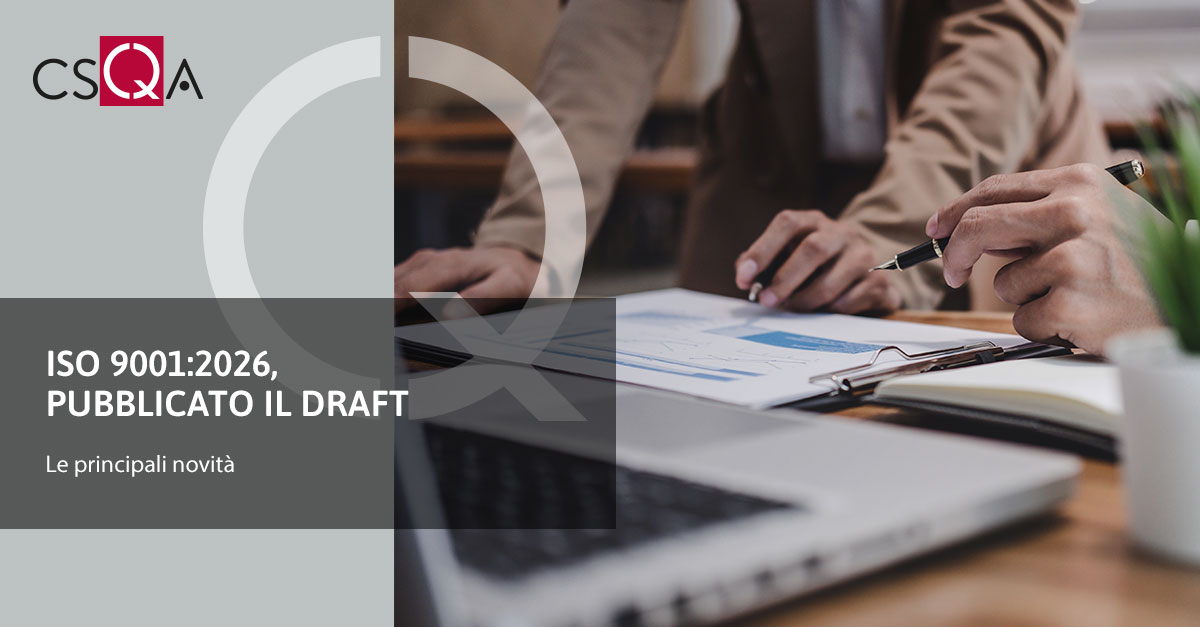 The Draft International Standard (DIS) of ISO 9001:2026 was published on 27 August 2025, opening a 12-week public consultation phase.
The Draft International Standard (DIS) of ISO 9001:2026 was published on 27 August 2025, opening a 12-week public consultation phase.The planned changes aim to integrate sustainability , enhance the use of digital technologies and strengthen organizational resilience , so as to make management systems more aligned with the challenges of the present and the future.
The final publication is expected in autumn 2026. A transition period will follow, the duration of which will be defined by the IAF (International Accreditation Forum), which traditionally grants certified companies up to 3 years to migrate to the new version.
For years, ISO 9001 has been an international benchmark for quality management in companies around the world: a structured set of procedures, processes, and policies that defines how a given company creates and delivers products and services.
Main new features expected in ISO 9001:2026
The changes do not overturn the structure of the standard, but introduce strategic and innovative aspects that will make quality systems more comprehensive and aligned with current challenges such as digitalization, sustainability, risk management, and organizational resilience. This will provide organizations with an opportunity to review their processes, strengthen their competitiveness, and effectively respond to new market and regulatory demands.Key areas of planned upgrades include:
- Sustainability: Greater integration of sustainability principles into quality management systems is expected. This is particularly important for organizations seeking to align with the expectations of increasingly ESG-conscious customers and stakeholders.
- Digitalization and technological innovation : the inclusion of digital technologies, artificial intelligence, automation, and cybersecurity in quality management processes.
- Risk Management and Resilience : The emphasis on risk management will be further strengthened, with a particular focus on organizational resilience, to better prepare for unforeseen events and ensure business continuity.
- Simplified approach for small businesses : The new version of the standard is expected to include clearer and more accessible guidelines for SMEs, making implementation and certification easier.
- Alignment with other standards : better integration with other management systems such as ISO 14001 (environment) and ISO 45001 (safety), through the High Level Structure.